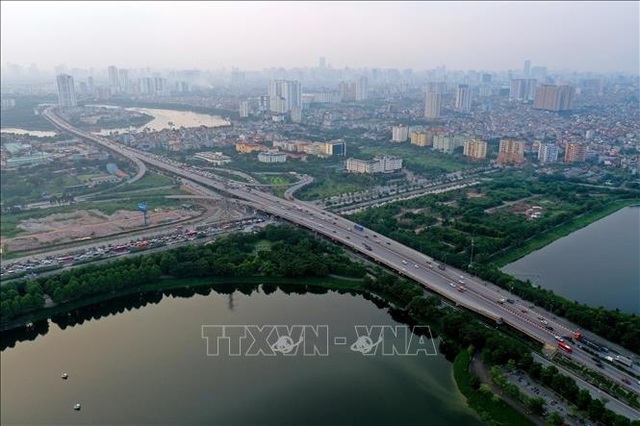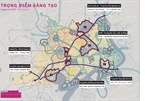 |
|
Birds' eye view of Hanoi's Ring Road No3.
|
This is part of the recommendation by Deputy Prime Minister Trinh Dinh Dung put forward in a meeting on Thursday on Vietnam's regional zoning for the period between 2021 and 2030 to implement the Law on Planning.
This option received near complete support from most ministries, state agencies and localities in the country. If the option is chosen by the Prime Minister later, Việt Nam would have seven regions instead of six as currently.
According to this plan, 63 provinces and cities nationwide would be classified into seven regions: northern mountainous provinces (10 provinces), northern plain and midland region (15 provinces consisting of 11 as currently plus four provinces – Hoà Bình, Phú Thọ, Thái Nguyên and Bắc Giang), north-central region (five provinces from Thanh Hoá to Thừa Thiên-Huế), south-central region (eight provinces from Đà Nẵng to Bình Thuận), Central Highland Region (five provinces), southeastern region (six provinces) and Mekong Delta region (13 provinces).
The current north-central and central coastal region stretching over 1,300 km with diverse geographic characteristics is said to be too long for tightened connection and exchange.
The region’s area is too large with very different cultures, history and people as well as differences in weather between the areas north and south of Hải Vân Pass.
The northern plain and midland region is the expanded Red River Delta with the addition of four provinces – Hoà Bình, Phú Thọ, Thái Nguyên and Bắc Giang.
The four provinces are seen to have big differences with northern mountainous provinces while they closely connect with Hà Nội and other Red River Delta provinces in tourism, food consumption, building materials and the manufacturing/processing industry.
Deputy Prime Minister Trịnh Đình Dũng said that regional planning played an important role in the systems of national planning towards comprehensive development.
“Regional planning highlights characteristics, creates a connection space, supports and maximises the potentials and advantages of localities in the regions to promote socio-economic development as well as conserve and promote cultural, spiritual and environmental values,” he said.
Professor and Dr Nguyễn Quang Thái, vice chairman of Việt Nam Economic Association said that in the past, regional plans were made but regional development and connection still had limitations.
“It is necessary to have policies and a legal framework so that plans could connect provinces and cities in each region and mobilise their resources,” he said, adding that: “If not, the regional planning is just a collection of localities.”
Trần Trọng Hanh, former head of the Architecture Planning Department under the Construction Ministry said that besides planning, three other major issues should be considered including a regional co-ordination office, regional financial policy and regional linkage.
The two former issues were still absent from legal documents while the regional linkage had been mentioned a lot, but actual practice was limited, he said.
Dr Đào Ngọc Nghiêm, former director of Hà Nội’s Architectural Planning Department said that it was necessary to develop co-operation mechanisms among provinces and cities in the same region.
Now, provinces and cities were seeking co-operation with each other by themselves, he said, adding that a regional co-operation fund should be established to facilitate co-operation activities. — VNS

HCM City adjusts zoning plan for innovative hub
The HCM City Department of Planning and Architecture has proposed a 1:2000 scale for zoning of three areas in the eastern part of the city.
 Vietnam is thinking about renewing its regional zoning through dividing the north-central and central coastal region into two new regions: north-central region and south-central region.
Vietnam is thinking about renewing its regional zoning through dividing the north-central and central coastal region into two new regions: north-central region and south-central region.